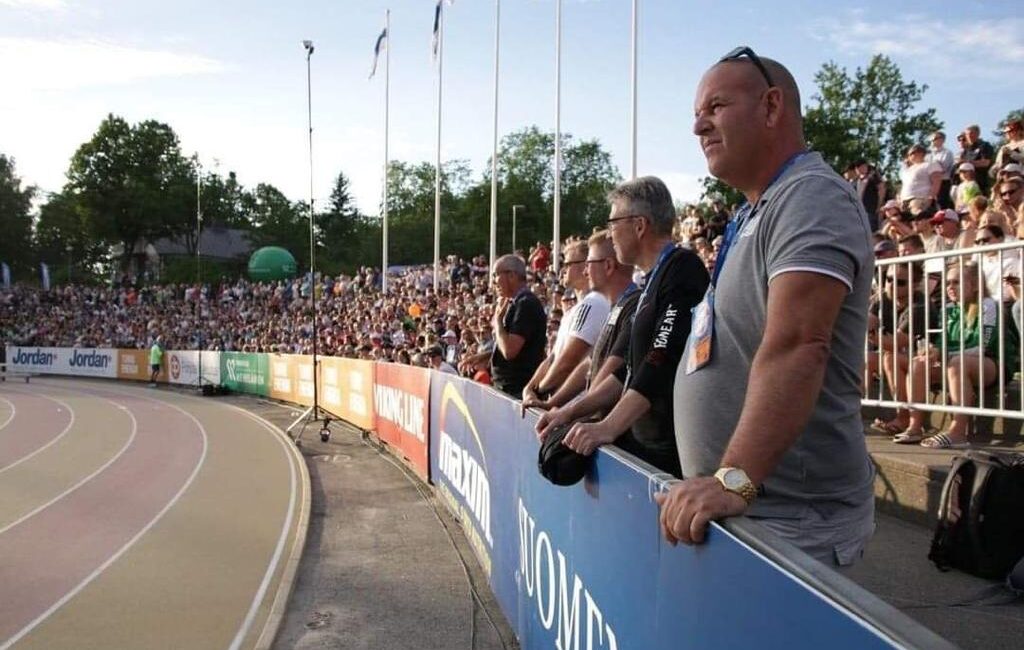Coaches play a significant role in nurturing and developing an athlete’s potential talent so as to achieve the best results at the most appropriate time throughout their careers. The question lurks as to how one embarks on the journey to help others reach their best potential.
Ismael Lopez Mastrapa is no stranger in developing junior throws athletes and turning them into professional sporting individuals by adopting his philosophies and knowledge through his experiences within the discipline. He took some time out of his busy schedule to shed some light as to what goes on behind the scenes for the development of world champions and podium competitors within the sport.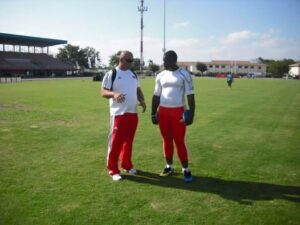
Mastrapa stated, “My philosophy in sport is that not all athletes mature at the same time, and you cannot use the same program for every athlete, you must individualize the training plan to suit them. Not all of them need the same things to achieve a result, reach a certain level of performance or to become successful.”
According to Mastrapa, “When designing training programs, we must conduct research, analysis, and studies on the athlete because in training we test the performances of these athletes and compare them to previous results. With this, we will get information which will allow us to change methods of training, the volume of training routines and the technical and physical aspects of exercises conducted.”
Not all the athletes achieve what the coaches want in a short period of time usually because they need time to practice and develop their techniques and muscle memory. He stated, “As a coach you must be patient because athletes themselves need time to develop. I always tell the athletes everything you set out in your mind; it can be achieved. Set realistic goals.”
In most of the programs he designs, Mastrapa tries to develop medium- and long-term plans to grow through the process. He said, “For example, once you set a championship goal, you have to achieve smaller goals to learn and grow from the experiences.”
This was evident when he guided Keshorn Walcott to the Olympics as their main season objective that year was to win the World Championships, whereas the Olympic gold medal came as icing on the cake. Though admitting Walcott’s athleticism was prominent from a very young age and his physique and competitive standard remains at the highest level till this day, they still maintained the mindset of growing through the process by setting attainable targets based on previous performances.
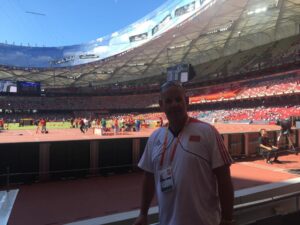 “Athletes like Keshorn Walcott and Cleopatra Borrel are successful because they are very dedicated, very passionate about the sport and what they do as a professional athlete,” he stated. After winning the World Junior Championships, everyone in the camp was happy because the main goal for the season was achieved. When they were at the Olympic Games in London 2012, another attainable goal was the ‘world junior record’ which was missed by 11cm with Walcott’s winning throw, however, it was not a main target at the tournament, nor did they place too much pressure on the athlete because they wanted to enjoy and learn from the experiences of the biggest sporting event.
“Athletes like Keshorn Walcott and Cleopatra Borrel are successful because they are very dedicated, very passionate about the sport and what they do as a professional athlete,” he stated. After winning the World Junior Championships, everyone in the camp was happy because the main goal for the season was achieved. When they were at the Olympic Games in London 2012, another attainable goal was the ‘world junior record’ which was missed by 11cm with Walcott’s winning throw, however, it was not a main target at the tournament, nor did they place too much pressure on the athlete because they wanted to enjoy and learn from the experiences of the biggest sporting event.
He expressed, “Keshorn is successful because of the passion in which he trains and the love he has for everything about the sport. I can say this because I have had other athletes under my supervision who were also talented, however, sometimes home environments and systems around the athletes are not conducive or beneficial to the athlete’s development, especially if an athlete is mentally weak and not focused.”
Some athletes perform very well at the junior level, however, when they go into the senior level, they do not perform at the same standard, leading them to retire early. A reason for this is due to specific training at a young age which targets the athletes to specialize in a particular event. He noted that this limits the growth and wholistic development of athletes.
Speaking about his time growing up in Cuba, he detailed, “As a child I practiced different sports such as Judo, Swimming, Volleyball, then finished in track and field. This ended up being my sport of choice as time went by. I was a hammer thrower however, I think I was not so good, *laughs*.” However, Mastrapa always liked throw events and the technicalities behind the execution of a good throw. It was through this passion he decided to develop his sporting career with the special focus on throwing events.
During his final year, before attaining his degree in Cuba, Mastrapa started to align himself with the recently introduced women’s throws team at the college and was even given a role on the technical staff. He was then tasked with coaching the hammer throwers for the college in 1993. He noted, “You can be successful as an athlete in Cuba, however, if you do not have a degree from a college, you would not be legible to coach a team.” Mastrapa worked for 10 years in Cuba before he came to Trinidad and Tobago in 2004 through a MOU agreement between both ministries of sport at the time.
The coaches were given various age groups to work with which gave him the ability to be creative with the developmental programs for young athletes in the discipline of throws. These included Javelin, Discuss, Shot-put and Hammer throws.
He stated, “When coaching young athletes, you must introduce them to all the skillful throws and develop their techniques in each. At the end of the day, you as the coach can decipher which of the events, they would be more capable of competing for in the future.” He also saw this as a great opportunity for him to get involved in the four different areas of the throws discipline.
When he came to T&T, Mastrapa started in the Caroni district and it was there he saw the potential and talent that exists on our shores, not only in track and field, but in the many different sports practiced in the country. At that time, he wrote a letter to NAAAs expressing his desire to work with the potential athletes gearing up for the World Youth Championships and the Pan Am Juniors Championships in 2007. The president at the time approved the proposal and this was the initiation of him being affiliated with the local junior athletes.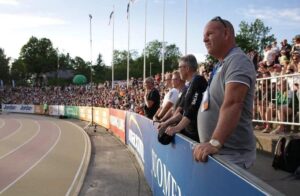
Most of the male athletes who competed under Mastrapa at these championships achieved podium finishes. He noticed not many girls and women were interested in field events in T&T, especially throws, therefore it is part of his mission to see the number of women increase in terms of involvement and participation at all levels within the various throwing events. He expressed, “For me, I think in my opinion that girls can achieve the same or even better results than the males because they tend to have more coordination in throwing techniques, also the equipment is lighter, which makes it easier for us as coaches see the results faster.”
He elaborated, “I think that many girls are not interested in the throwing events because it is not a culture in T&T as a go to sport.” However, since his initial involvement with the sport, he noted more girls have joined in the junior categories hinting of the possible potential for success in the sport within the next three to five years.
Noting the resources required for athletes to practice throwing events along with the availability of facilities, he said this may add to the reason why youngsters may resort to the track events more than the field events. In the sport of javelin, more so throws in general, athletes need time to develop because it is a very technical discipline.
The throws discipline is going through a transitory period in T&T especially after the Covid-19 pandemic. However, Mastrapa is currently drafting a national program along with the EDPU at SPORTT which should be beneficial for the future of the sport within the country.
He stated, “If we compare the population of Cuba to the population of T&T, it can be noted that the twin island republic has more natural talent along with more sporting facilities. In track and field, Cuba has a total of two stadiums for their developmental programs for its population of 12 million while T&T have 5 national stadiums for its 1.4 million citizens. However, 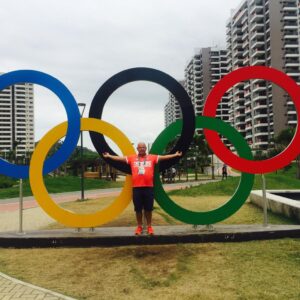 the sporting structure in Cuba is more organized along with dedicated coaches and programs for athletes to enhance themselves both academically and physically.” He ended by saying, “Everything is not money, its passion, but it is expensive.”
the sporting structure in Cuba is more organized along with dedicated coaches and programs for athletes to enhance themselves both academically and physically.” He ended by saying, “Everything is not money, its passion, but it is expensive.”
We would like to wish Mastrapa the best of luck as he continues to assist in the development of our national athletes in athletics, more so the discipline of throws events.

